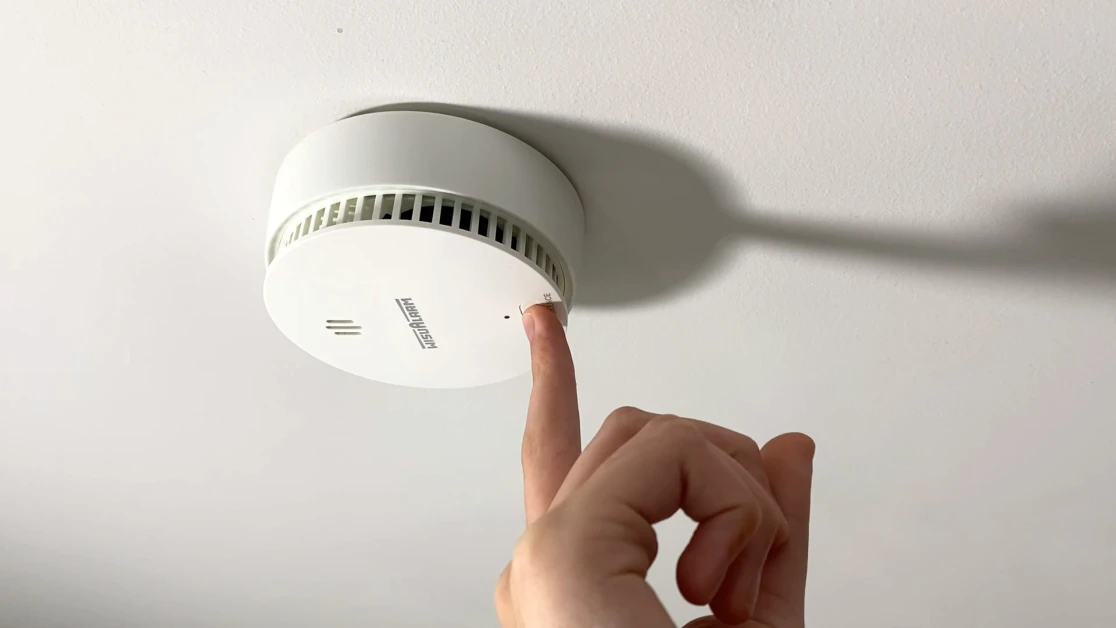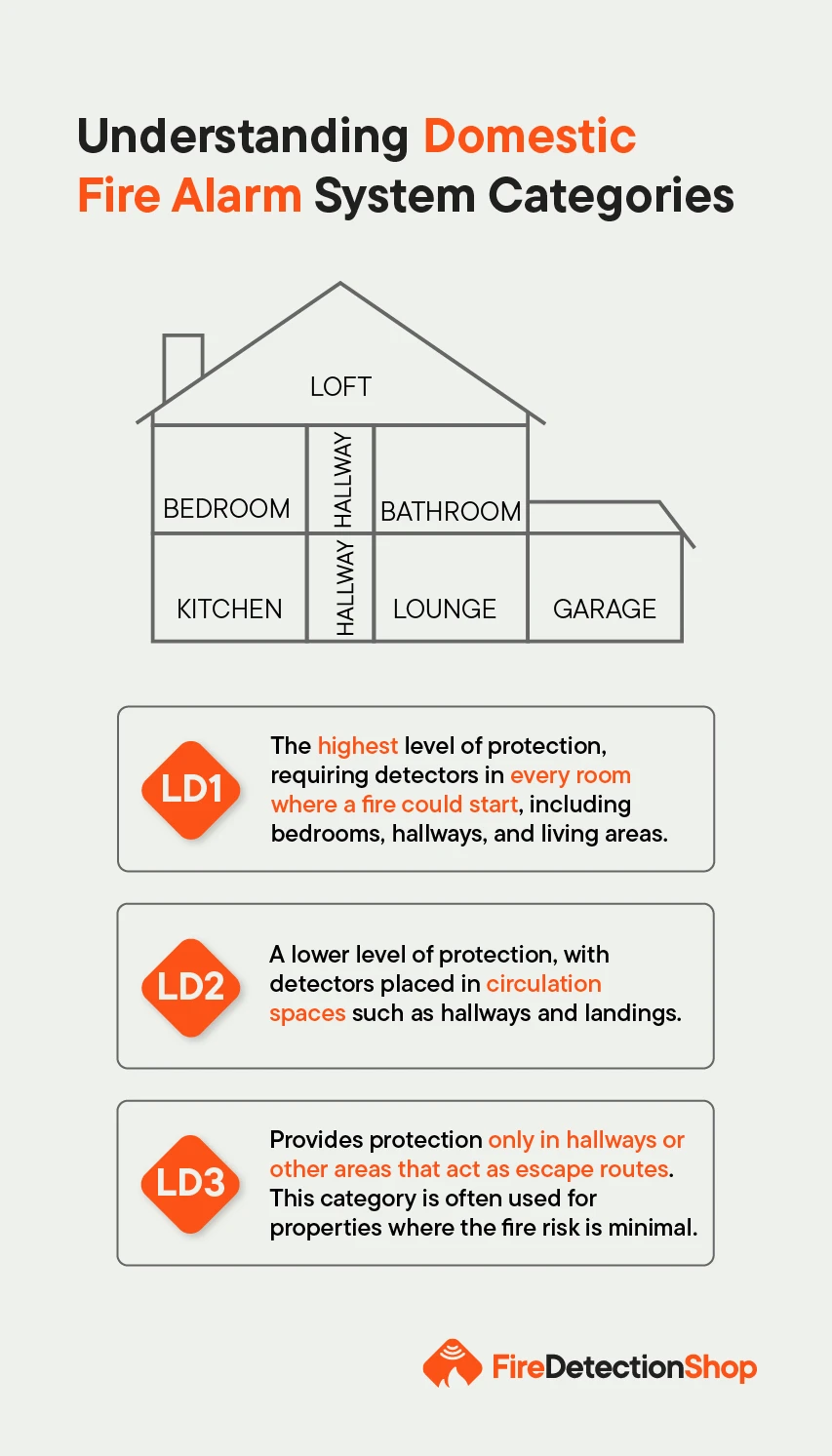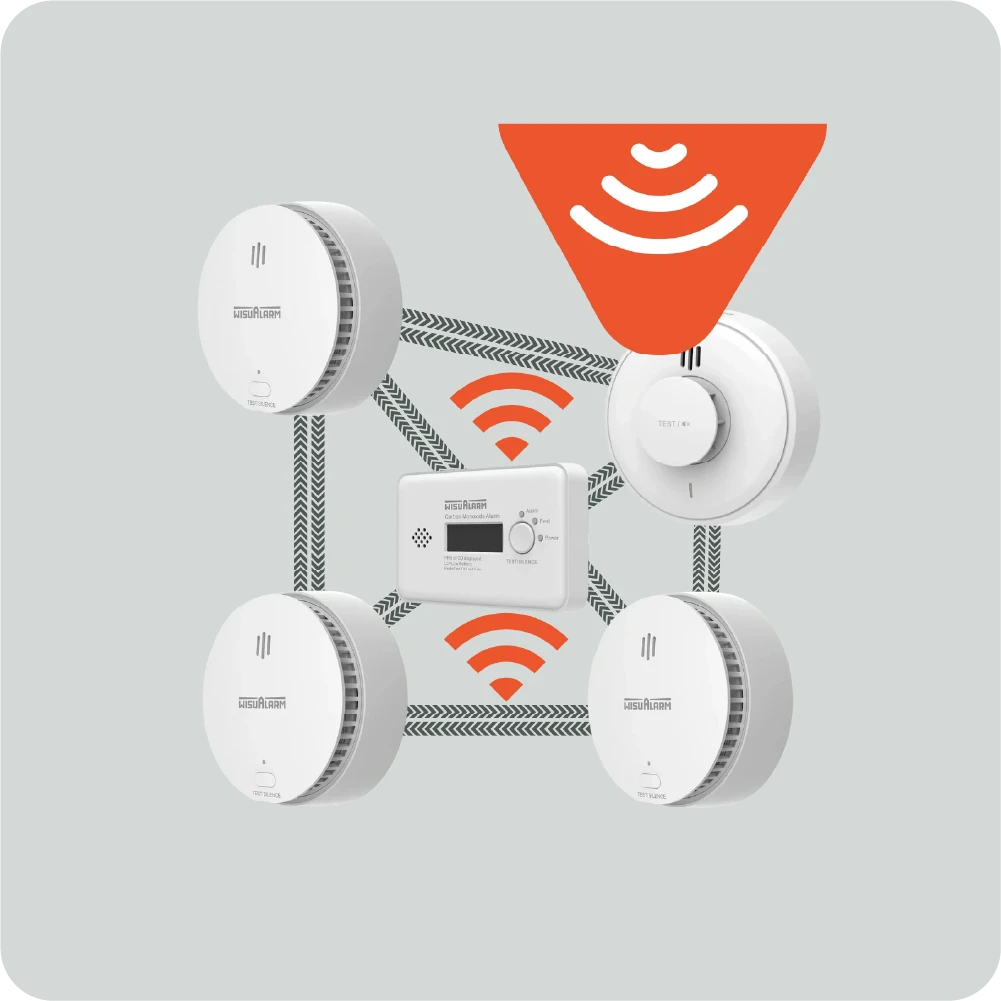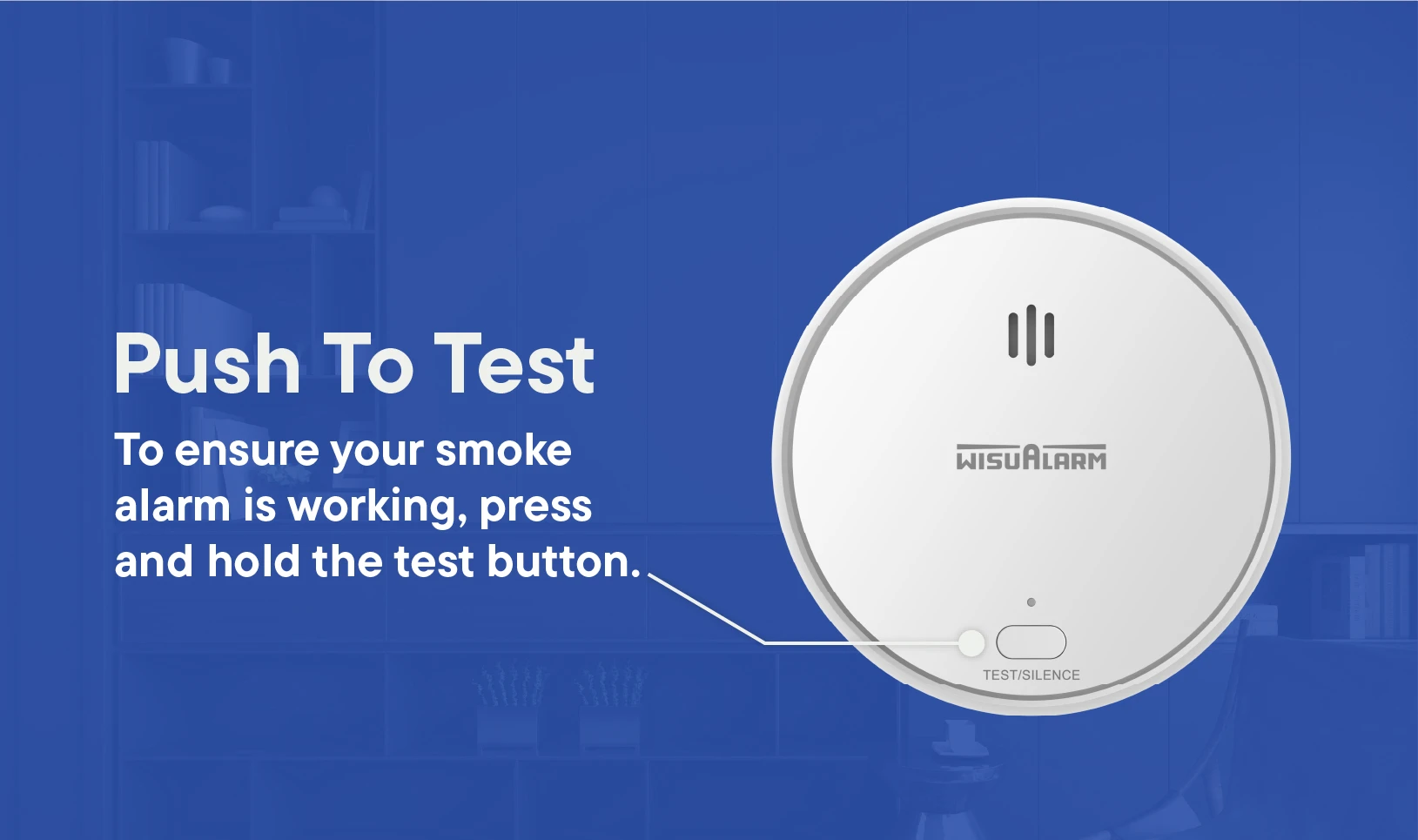
Need assistance?
Need Assistance? Call Us 0330 058 0630
12/05/2025 • by Alice P

Smoke, heat, and carbon monoxide (CO) alarms are essential for protecting your family and your property.
Yet many homeowners in England are unsure about how many alarms they actually need. With varying property sizes, layouts, and risk areas, it's no surprise that this can get confusing.
In this guide, we’ll break down how to determine the right number and type of alarms for your home, what UK regulations require, and how you can go beyond the basics to build a safer, smarter fire protection system.
Fire safety regulations vary depending on property type and whether you're a homeowner or landlord.
For rented properties, legislation requires:
At least one smoke alarm on every floor used as living accommodation.
A carbon monoxide alarm in any room with a solid fuel appliance, like a wood-burning stove.
For new builds and major renovations, even stricter rules apply. You must install:
Interlinked smoke alarms in hallways and circulation areas.
Heat alarms in high-risk areas such as kitchens.
CO alarms near fuel-burning appliances.
Even though these standards may not apply to owner-occupied homes, they’re widely recommended. You can find full details in the official Smoke and Carbon Monoxide Alarm Regulations.

The right number of smoke alarms depends on your home’s layout, the number of floors, and risk zones. While the legal minimum might be one per floor, that doesn’t always guarantee full coverage.
Room or Area | Type of Alarm | Reason |
|---|---|---|
Bedrooms | Smoke alarm | Wakes sleeping occupants in case of fire |
Hallways & landings | Smoke alarm | Key routes for evacuation |
Kitchens | Heat alarm | Avoids false alarms from cooking fumes |
Living rooms | Smoke alarm | Electrical fires can start here |
Lofts or attics | Smoke alarm | Fires in storage spaces may go unnoticed |
Garages & workshops | Heat alarm | Extra risk due to flammables and tools |
Basements | Smoke or heat | Covers heating equipment and electrics |
For a complete range of domestic alarms, explore our interlinked smoke and heat alarm kits.
In addition to property size and layout, consider these factors when planning your alarm system:
Number of floors – A three-storey home needs at least three alarms, but more may be needed in rooms off long corridors.
Open-plan layouts – Smoke can spread quickly, but detection can be delayed without alarms in large or partitioned spaces.
Specific risks – Homes with log burners, gas appliances, or integrated garages may require extra coverage.
Family considerations – If you have children, elderly relatives, or anyone with hearing impairments, you may need visual or vibrating alert systems.
As a general rule of thumb, UK fire services, recommend that you should have one smoke alarm per floor.

Smoke alarms detect airborne particles from smouldering fires and are ideal for most rooms.
Heat alarms activate based on temperature rise and are best used in kitchens, garages, and steamy bathrooms where false alarms are common.
CO is colourless, odourless, and deadly. You should place a CO alarm in every room with a gas boiler, fireplace, or wood-burning stove.
For more information, check out our guide on CO detectors.
Many modern alarms go beyond basic functionality. Consider:
Interlinked alarms – When one alarm is triggered, all others sound, ensuring the whole house is alerted.
Smart alarms – Send alerts to your phone, useful if you're away from home.
Voice alerts – Easier to understand, especially for children or vulnerable people.
Home automation integration – Smart systems can control lighting, unlock doors, and notify emergency services.

Most modern alarms are designed for easy DIY setup, especially battery powered units. Still, larger or more complex systems may benefit from professional installation, particularly if you're wiring in mains powered or interlinked units.
Make sure alarms are:
Mounted at least 30cm from walls or corners.
Not placed near windows, vents, or fans.
Not painted over or obstructed.
Test alarms monthly using the test button.
Replace batteries annually, or sooner if low-battery alerts sound.
Clean units every few months to remove dust.
Replace alarms every 10 years, or sooner if faulty.

While minimum legal requirements provide a safety baseline, most homes benefit from more comprehensive fire alarm coverage. By choosing the right combination of alarms, installing them properly, and maintaining them regularly, you’re investing in long-term protection and peace of mind.
If you’re unsure where to start, we recommend checking out our best-selling domestic fire alarm kits or speaking with one of our fire safety experts.
08/05/2025 • by Alice P